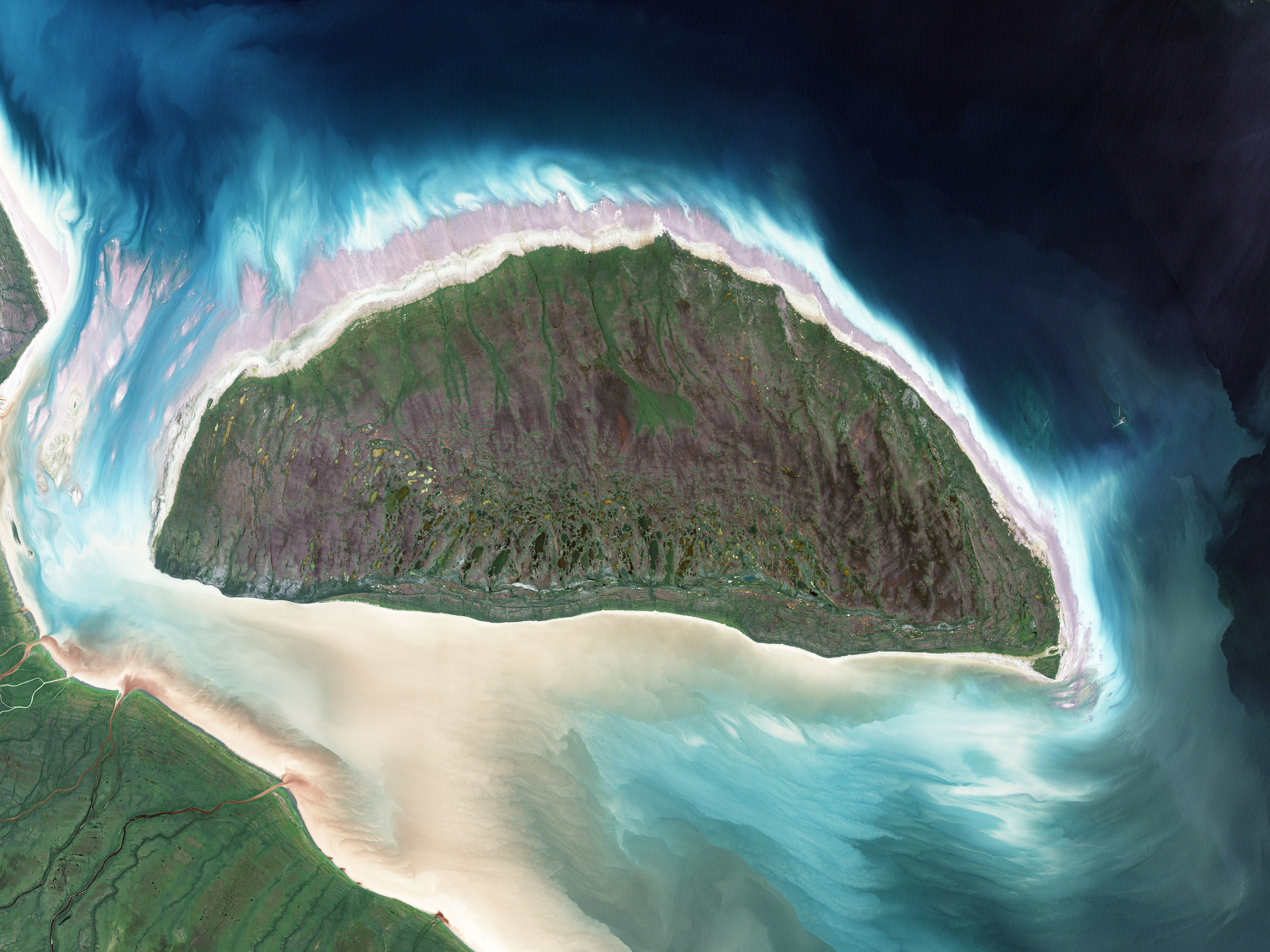Akimiski Island on:
[Wikipedia]
[Google]
[Amazon]
Akimiski Island is the largest island in

 * Mean annual temperature:
* Average rainfall:
* Average snowfall:
* Mean annual temperature:
* Average rainfall:
* Average snowfall:
NASA Photo
: "STS085-713-070 Akimiski Island, Northwest Territory, Canada August 1997 Akimiski Island, a 2000-square-mile (5180 square kilometers) uninhabited island, is the largest island in James Bay (a southeasterly extension of Hudson Bay)." {{Islands of the Qikiqtaaluk Region Islands of James Bay Uninhabited islands of Qikiqtaaluk Region Nature conservation in Nunavut
James Bay
James Bay (french: Baie James; cr, ᐐᓂᐯᒄ, Wînipekw, dirty water) is a large body of water located on the southern end of Hudson Bay in Canada. Both bodies of water extend from the Arctic Ocean, of which James Bay is the southernmost pa ...
(a southeasterly extension of Hudson Bay), Canada, which is part of the Qikiqtaaluk Region of the territory of Nunavut. It has an area of , making it the 163rd largest island in the world, and Canada's 29th largest island. Akimiski Island is from the province of Ontario
Ontario ( ; ) is one of the thirteen provinces and territories of Canada.Ontario is located in the geographic eastern half of Canada, but it has historically and politically been considered to be part of Central Canada. Located in Central C ...
. From the western side of the island, the Ontario coastline is visible.
The island's name is Swampy Cree
The Swampy Cree people, also known by their autonyms ''Néhinaw'', ''Maskiki Wi Iniwak'', ''Mushkekowuk,'' ''Maškékowak'' or ''Maskekon'' (and therefore also ''Muskegon'' and ''Muskegoes'') or by exonyms including ''West Main Cree,'' ''Lowlan ...
for "land across the water".
The island has no year-round human inhabitants; however, it is part of the Attawapiskat First Nation's traditional territory and is frequently used for traditional purposes. The surface of Akimiski is flat and slopes gradually to the north. Most of the vegetation that covers the island consists of lichen, moss, sedges
The Cyperaceae are a family of graminoid (grass-like), monocotyledonous flowering plants known as sedges. The family is large, with some 5,500 known species described in about 90 genera, the largest being the "true sedges" genus ''Carex'' wit ...
, and dwarf black spruce. The island is a coastal wetland that includes mudflats, tidal marshes, and tidal mudflats. Freshwater streams that flow into southwestern James Bay carry sediments and abundant nutrients that help to sustain the productive waterfowl habitat around Akimiski Island.
The Akimiski Island Group includes Akimiski, Gasket, and Gullery islands; Albert Shoal; and the Akimiski Strait Isles.
Climate

 * Mean annual temperature:
* Average rainfall:
* Average snowfall:
* Mean annual temperature:
* Average rainfall:
* Average snowfall:
Conservation
Akimiski Island is the site of the Akimiski Island Migratory Bird Sanctuary, a Canadian Important Bird Area, site #NU036 (). Its eastern portion is also a federal Migratory Bird Sanctuary, and much of the coastline is a Key Migratory Bird Terrestrial Habitat site.Fauna
The coastal waters andwetland
A wetland is a distinct ecosystem that is flooded or saturated by water, either permanently (for years or decades) or seasonally (for weeks or months). Flooding results in oxygen-free (anoxic) processes prevailing, especially in the soils. The p ...
s of Akimiski Island (and James Bay in general) are important feeding grounds for many varieties of migratory bird
Bird migration is the regular seasonal movement, often north and south along a flyway, between breeding and wintering grounds. Many species of bird migrate. Migration carries high costs in predation and mortality, including from hunting b ...
s. Notable species include:
* Atlantic brant
* Canada goose
* Lesser snow goose
* Marbled godwit
The marbled godwit (''Limosa fedoa'') is a large migratory shorebird in the family Scolopacidae. On average, it is the largest of the four species of godwit.
Taxonomy
In 1750 the English naturalist George Edwards included an illustration and a ...
* Semipalmated sandpiper
The semipalmated sandpiper (''Calidris pusilla'') is a very small shorebird. The genus name is from Ancient Greek ''kalidris'' or ''skalidris'', a term used by Aristotle for some grey-coloured waterside birds. The specific ''pusilla'' is Lati ...
Because James Bay and Hudson Bay are funnel-shaped, migrating birds from the Arctic
The Arctic ( or ) is a polar region located at the northernmost part of Earth. The Arctic consists of the Arctic Ocean, adjacent seas, and parts of Canada (Yukon, Northwest Territories, Nunavut), Danish Realm (Greenland), Finland, Iceland, N ...
concentrate in this area. During fall migration, an abundance of birds with both adults and young are present. In the springtime, the birds tend to reside in the southern areas of James Bay until the northern section thaws.
Among mammals, ringed seal
The ringed seal (''Pusa hispida'') is an earless seal inhabiting the Arctic and sub-Arctic regions. The ringed seal is a relatively small seal, rarely greater than 1.5 m in length, with a distinctive patterning of dark spots surrounded by light ...
s, polar bears, and beluga whale
The beluga whale () (''Delphinapterus leucas'') is an Arctic and sub-Arctic cetacean. It is one of two members of the family Monodontidae, along with the narwhal, and the only member of the genus ''Delphinapterus''. It is also known as the ...
s can be found in the area.
References
Further reading
* Hill, Michael Robert John. ''Factors Influencing Pre- and Post-Fledging Growth and Survival of Canada Goose Goslings on Akimiski Island, Nunavut''. Ottawa: National Library of Canada = Bibliothèque nationale du Canada, 2000. * *External links
NASA Photo
: "STS085-713-070 Akimiski Island, Northwest Territory, Canada August 1997 Akimiski Island, a 2000-square-mile (5180 square kilometers) uninhabited island, is the largest island in James Bay (a southeasterly extension of Hudson Bay)." {{Islands of the Qikiqtaaluk Region Islands of James Bay Uninhabited islands of Qikiqtaaluk Region Nature conservation in Nunavut